Last Updated on April 20, 2023
Leaks and damages on your roof can lead to serious health problems for you and your family. They can also cause permanent damage that will cost you more in the long run.
Repairing your RV roof with plywood is the most suitable way to ensure a lasting fix. Plywood is a strong, durable material that will protect your RV from future leaks.
But you may wonder which is the best plywood for RV roof repair since different types of plywood come from different trees. Most of the woodworkers will recommend using marine plywood with a thickness of 1/4 or 3/8 inches.
Here we also discuss other types of plywood that could be used for repairing your RV roof. So stay tuned and enjoy the article.
What is the Best Plywood for RV Roof Repair according to Woodworkers?
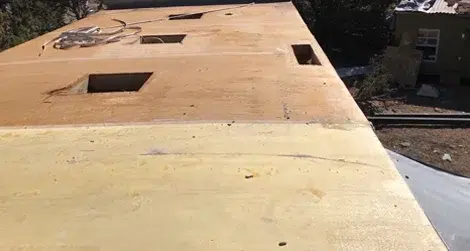
There are different types of plywood, and each one has its own unique set of characteristics. Depending on the extent of the damage to your RV roof, you’ll want to choose plywood that is strong and durable enough to withstand future leaks.
Here are some of the best plywood options for repairing your RV roof:
Marine Plywood:
Marine plywood is a type of plywood that is designed for use in humid and wet environments. It is made with a waterproof adhesive that prevents the layers of wood from delaminating. Marine plywood is also treated to resist rot and decay.
If you live in an area with high humidity or frequent storms, marine plywood is the best option for repairing your RV roof. It is also the most expensive type of plywood.
Birch Plywood:
If you’re looking for strong and durable roof plywood enough to withstand future leaks, Baltic Birch plywood is a good option. This type of plywood is manufactured using the latest methods in wood production, and it has a beautiful lengthwise grain. It also takes stain well, making it a good choice for woodworking projects.
Baltic Birch plywood is graded as B/BB, which means that it has a single piece face and a back veneer. The face veneer is the highest quality, while the back veneer is slightly lower quality.

Bass Wood:
Bass Wood is a good choice for plywood that is strong and durable enough to withstand future leaks. This wood comprises basswood surfaces and a middle aspen wood layer, which ensures excellent strength and durability.
It is also sanded smooth, with exact dimensions and specific dimensional tolerances strictly maintained. This plywood is ideal for all woodworking or craft projects, aircraft, boats, architectural model making, pyrography, painting, staining, and more.

Pressure-Treated Plywood:
Pressure-treated plywood is treated with chemicals that make it resistant to rot and decay. This type of plywood is often used in outdoor construction projects.
If you’re concerned about water damage, pressure-treated plywood is a good option for repairing your RV roof. It is more expensive than regular plywood but cheaper than marine plywood.
CDX Plywood:
CDX plywood is the most common type of plywood. It is made with lower-grade lumber and is typically used in construction projects. CDX plywood is a good option for repairing your RV roof if the damage is not too severe.
OSB Plywood:
OSB plywood is made with chips of wood that are glued together. It is often used as a substitute for regular plywood. OSB plywood is a good option for repairing your RV roof if you’re on a budget.

MDF Plywood:
MDF plywood is made with wood fibers that are glued together. It is a very strong type of plywood but also very heavy. MDF plywood is a good option for repairing your RV roof if the damage is severe.
Maple Plywood:
Maple plywood is made with thin layers of maple wood. It can withstand moisture and heat better than other types of plywood. Maple plywood is a good option for repairing your RV roof if you look for durable and moisture-resistant plywood.

Cherry Plywood:
Although cherry plywood is not as strong as maple plywood, it is more resistant to rot and decay. You can use cherry plywood to repair your RV roof if you’re looking for moisture-resistant plywood. They can also be used as floors and walls in RVs.
Walnut Plywood:
Walnut plywood is a great choice for RV roof repair because it is extremely strong and durable. This type of plywood is often used in construction because of its strength and ability to withstand heavyweights.
It is also rot-resistant, making it ideal for repairing leaks in your RV roof. Walnut plywood is available in various thicknesses so that you can choose the right one for your needs.

Mahogany Plywood:
Mahogany plywood is a great choice for repairing an RV roof, as it is durable. It is also resistant to water and moisture, making it the perfect choice for outdoor applications. This plywood is also easy to work with, making it a good option for those who are not experienced in working with wood.
Oak Plywood:
Oak plywood is resistant to moisture and rotting, making it a good option for areas that are exposed to the elements. This plywood can be used to repair various roofing materials, including metal, shingles, and rubber.
Pine Plywood:
When repairing your RV roof, you’ll want to choose strong and durable plywood. Pine plywood is a good option because it is both strong and lightweight. It’s also easy to work with, making it a good choice for people who are not experienced in working with wood.
Pine plywood is also relatively inexpensive, so you won’t have to spend a lot of money on repairs. However, pine plywood is not as waterproof as some of the other options, so you’ll need to be sure to seal it properly before using it on your RV roof.
What to Look for When Choosing Plywood for RV Roof Repair?

When choosing plywood for RV roof repair, there are several things you should keep in mind. Here are a few factors to consider:
Sizes:
Plywood is available in a variety of sizes. The size you choose will depend on the extent of the damage to your RV roof. If the damage is minimal, then you may be able to get away with using a smaller piece of plywood. However, if the damage is more significant, then you’ll need to use a larger piece of plywood.
Thickness:
Plywood is also available in a variety of thicknesses. The thickness you choose will depend on the amount of weight that will be placed on the plywood.
For example, if you’re using plywood to repair a hole in your RV roof, you won’t need to use a very thick piece of plywood. However, if you’re using the plywood to reinforce your RV roof, then you’ll want to choose a thicker piece of plywood.
Roof Material:
Your RV roof is likely made from either fiberglass or aluminum. The type of plywood you choose will depend on your RV roof’s material. If your RV roof is made from fiberglass, you’ll want to use plywood designed for use with fiberglass roofs.
However, if your RV roof is made from aluminum, you’ll want to use plywood designed for use with aluminum roofs. But marine and Birch plywoods are good options for all types of RV roofs.
Plywood Grades:
When choosing plywood for RV roof repair, you’ll also need to consider the grade of the plywood. Plywood is typically graded based on its strength and durability. You will get A, B, C, and D grades. A is the highest quality, and D is the lowest.
Plywood Layers:
Plywood is also available in 3 -ply, 5-ply, and Multi-ply options. The plywood you choose will depend on the level of stability you need.
For example, if you’re using plywood to repair a hole in your RV roof, you may be able to use a 3-ply or 5-ply piece of plywood. However, if you’re using the plywood to reinforce your RV roof, you’ll want to choose a multi-ply piece of plywood.
Types of RV Roof:

There are 4 types of RV roofs: aluminum, fiberglass, rubber EPDM, and TPO. Each type of roof has its own unique set of characteristics. Depending on the type of RV roof you have, you’ll want to choose plywood compatible with it.
Aluminum Roof:
Aluminum is a great choice for your RV roof replacement project because it is strong and durable. It is also non-toxic, making it a safe option for your family. Aluminum is also environmentally friendly and can be recycled when you replace it.
Fiberglass Roof:
Fiberglass is one of the most popular roofing materials for RVs. It is strong and durable, and it resists weathering and decay. Fiberglass roofs are also fire-resistant, making them good for safety-conscious RVers.
Fiberglass roofs are available in various colors, which can help keep your RV cooler in the summer. They are also easy to clean and maintain. However, fiberglass roofs are more expensive than other types of RV roofs, and they are also heavier.
If you are looking for a durable and long-lasting roof for your RV, fiberglass is a good choice. However, if you are concerned about weight or cost, you may want to consider another roofing material.
TPO Roof:
TPO is a newer type of roofing material that has become popular for RVs in recent years. TPO is a synthetic rubber that is reinforced with fiberglass. It is strong and durable, and it resists weathering and UV rays.
TPO roofs are also lightweight and easy to install. However, they are not as widely available as other roofing materials, and they can be more expensive.
Rubber Roof:
An EPDM roof is a great option for repairing an RV roof because it is strong and durable, and it can withstand future leaks. EPDM roofs are also relatively easy to install, and they are relatively affordable compared to other roofing materials.
However, rubber roofs are not as widely available as other roofing materials, and they can be more expensive.
How to Replace Plywood for Repairing RV Roof?

Before you begin repairing your RV roof, there are a few things you need to know. First, you’ll need to gather the necessary tools and materials. Second, you’ll need to identify the source of the leak. And third, you’ll need to choose the best plywood for RV roof repair.
Step 1. Remove Fixtures:
The first step in repairing your RV roof is to remove any fixtures that are in the way. This includes removing the RV AC unit, the TV antenna, and any other obstacles.
Step 2. Remove the Termination Bars:
The next step is to remove the termination bars. These are the metal strips that run along the edges of your RV roof. They are used to seal the edges of the old rubber roofing.
Step 3. Remove the Old Rubber Roofing:
Once you have removed the fixtures and the termination bars, you can remove the old rubber roofing. You’ll need to use a drill and a screwdriver to do this. Start by removing the screws that hold the rubber roofing in place. Then, carefully peel the rubber roofing away from the RV.
Step 4. Inspect Plywood Sub Roofing:
After removing the old rubber roofing, you’ll need to inspect the plywood sub roofing. This is the layer of plywood that lies underneath the rubber roofing. If the plywood is damaged, you’ll need to replace it.
Step 5. Remove Damaged Areas:
Once you have inspected the plywood sub roofing, you’ll need to remove any damaged areas. To do this, you’ll need a saw. Carefully cut away the damaged plywood and remove it from the RV.
Step 6. Place the New Plywood:
After removing the damaged plywood, you’ll need to place the new plywood in its place. To do this, you’ll need to use roofing nails and roofing cement. First, apply the RV roof sealant to the edges of the plywood. Then, nail the plywood in place.
Step 7. Install the Replacement Panel:
Now you’ll need to install the replacement panel. You’ll need to use tar paper and roofing nails to do this. Then nail the replacement panel in place.
Step 8. Seal the Seams:
To seal the seams, you’ll need to use roofing sealant or RV flex seal tape, apply the sealant to the seams, and then smooth it out with your fingers. Let the sealant dry before you use your RV. If you use flex seal tape, make sure to overlap the tape by at least 2 inches.
How to Coat a Rubber RV Roof?
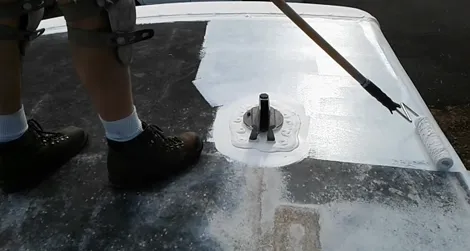
Rv roof coating is important to protect it from the sun and elements. There are several different types of coatings that can be used, but the most popular is EPDM or rubber coating.
EPDM coating is a synthetic rubber that is applied in a thick layer to the RV roof. It is available in both white and black, but white is the most popular because it reflects the sun’s rays and helps keep the RV cooler.
Step 1. Clean the RV roof:
First, clean the RV roof with soapy water and a scrub brush. Then, rinse it off and let it dry.
Step 2. Apply the primer (Optional):
Next, apply a layer of primer to the RV roof. This will help the EPDM coating to adhere better.
Step 3. Roll on the EPDM Coating:
After the primer has dried, roll on the EPDM coating. Start in one corner and work your way around. Make sure to overlap each stroke by about 6 inches.
Step 4. Let the Coating Dry:
After applying the EPDM coating, let it dry for 24 hours. Then, enjoy your new coat! Now that you know about repairing your RV roof, you can start the project.
FAQs:
How Thick is the Plywood on an RV Roof?
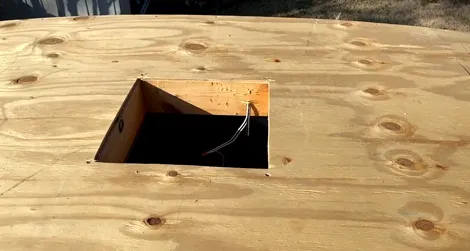
The plywood on an RV roof is typically 1/4-inch thick, but it can also be 3/8-inch thick. The seams between the panels should be very tight, and there should be no screws or staples sticking up above the level of the plywood.
Can I Replace My RV Roof Myself?
Yes, you can replace your RV roof yourself. You will need to remove the awning. Then, you will need to remove the old roof membrane and replace damaged plywood. If you are not experienced with roofing, it is best to hire a professional to do the job.
Can You Use Flex Seal on RV Roofs?
Flex Seal is a sealant and it can be used on RV roofs. It is a good idea to use Flex Seal because it will protect your roof from leaks and it will also last a long time.
How Often Should You Recoat an RV Roof?
It is a good idea to recoat your RV roof after two years. This will help to protect your roof from leaks and damage. It is also a good idea to recoat your roof if you notice any signs of damage or leaks.
Can You Walk on the Roof of an RV?
Yes, you can walk on the roof of an RV as long as you are careful. It is important to avoid walking on the seams, and you should always wear shoes with good traction.
Conclusion:
RV roofs are susceptible to leaks and damage. Over time, the sun and elements can take their toll on your RV roof. If you notice any leaks or damage, it’s important to repair them as soon as possible. You should choose the best plywood for RV roof repair based on the extent of the damage.
If you follow the steps outlined above, you’ll be able to repair your RV roof and extend its lifespan. You’ll have your RV roof looking good as new with a little effort. Otherwise, you could end up with a costly repair bill.
We hope you got the proper guideline for choosing the right plywood and tips on installing it for your RV roof repair. If you have any questions or comments, please feel free to leave them below.
- STRONG, DURABLE, HEAVY-DUTY – These craft wood pieces of multi-coated Baltic Birch plywood offer…
- BEAUTIFUL WOOD, BEAUTIFUL PROJECT- Baltics-grown birch plywood is prized by woodworkers everywhere….
- CHOOSE LASER CUTTER WOOD – The layers of the Baltic Birch sheets of thick plywood are designed to…
Last update on 2025-12-13 / Affiliate links / Images from Amazon Product Advertising API



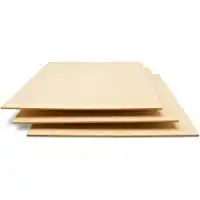
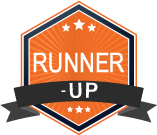
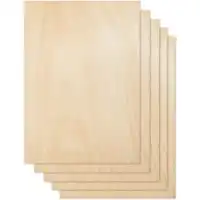




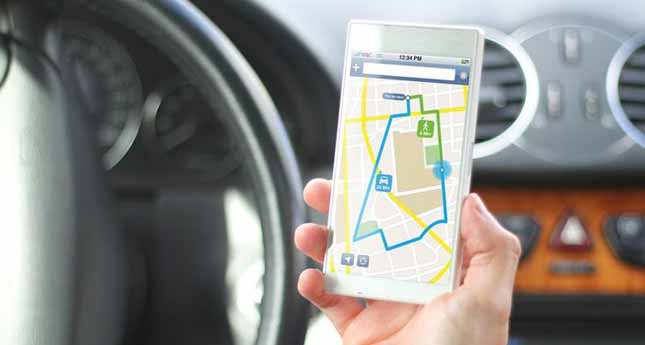
If your review, inspection and roof reconstruction determines that recoating your plywood or rubber roof is the best option there are a lot of products out there that can be applied by the home owner to recoat your rv roof. We have an older RV with a rubber roof that was starting to leak in some aging and damaged areas. Replaced some caulk around the AC and vents and recoated it myself two years ago with easy to use products I found online and it has been good since. Still have some product left. It’s RV roof magic. The one coat process was a big benefit to me.
Thanks for sharing.